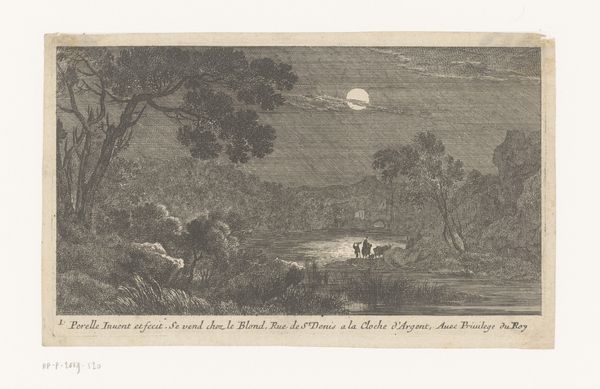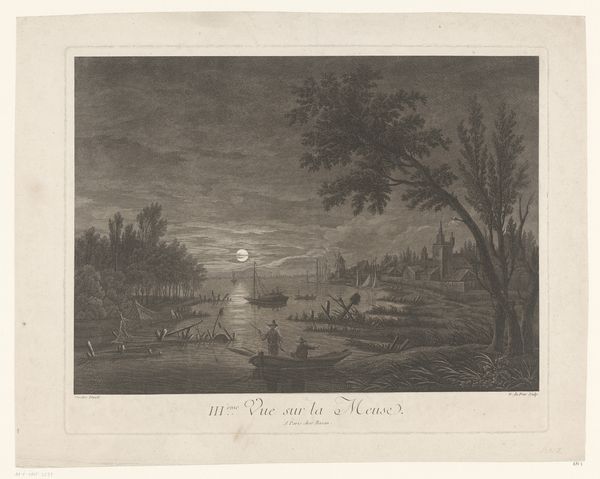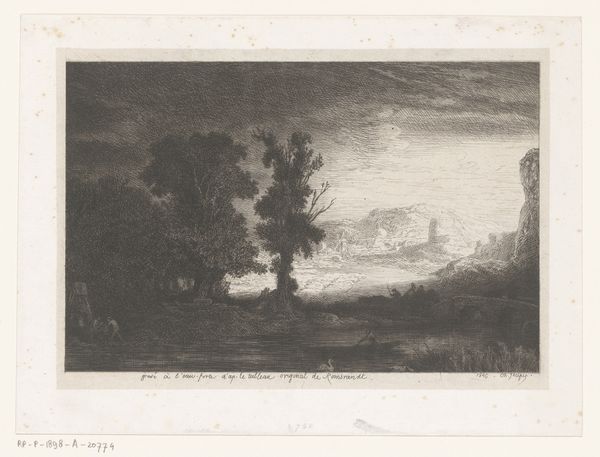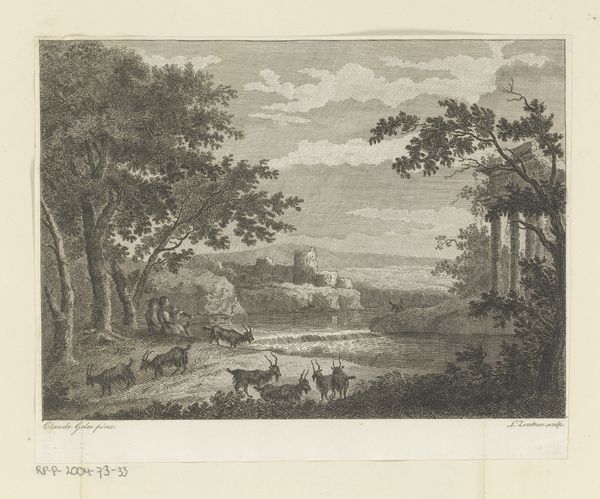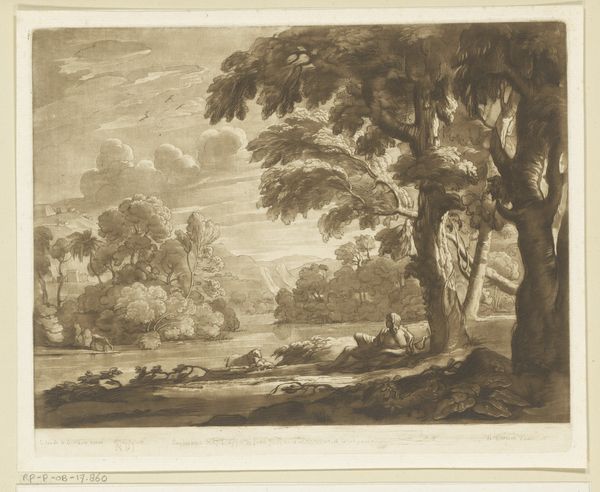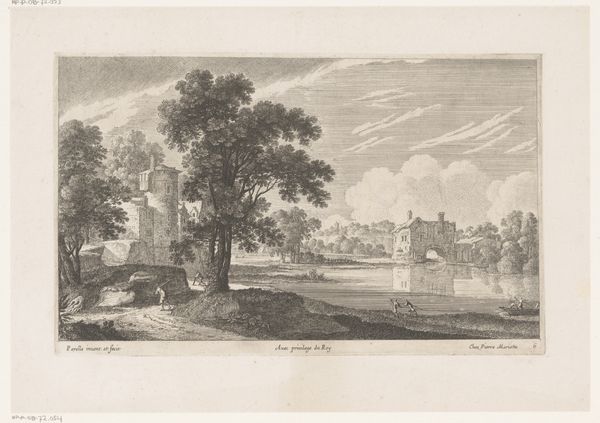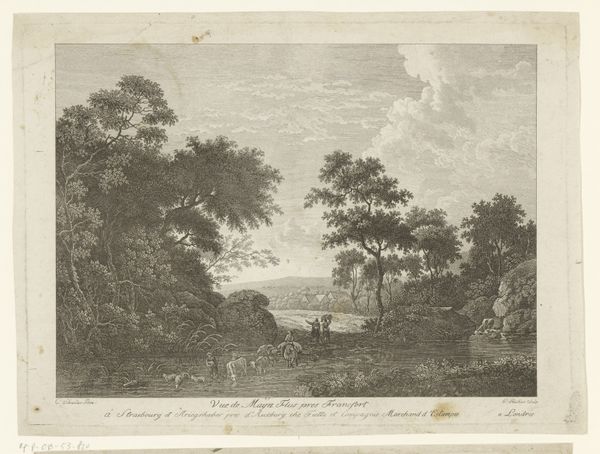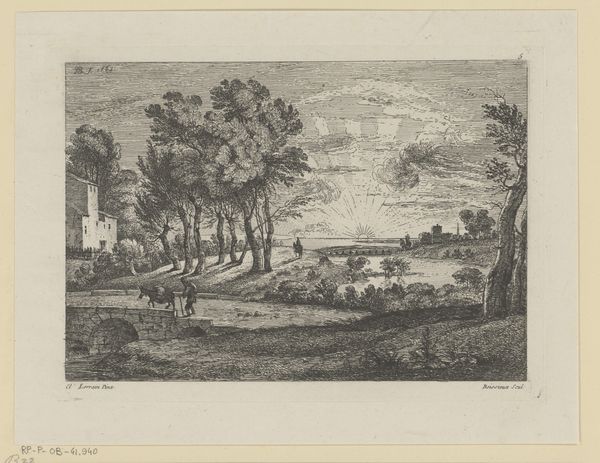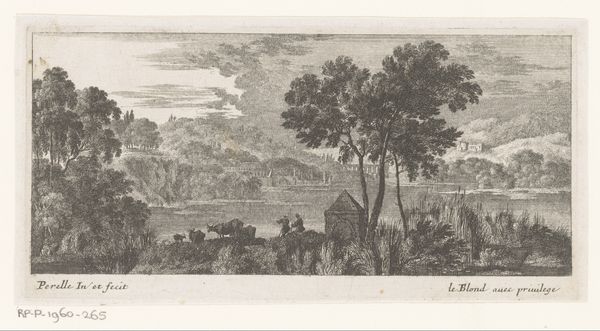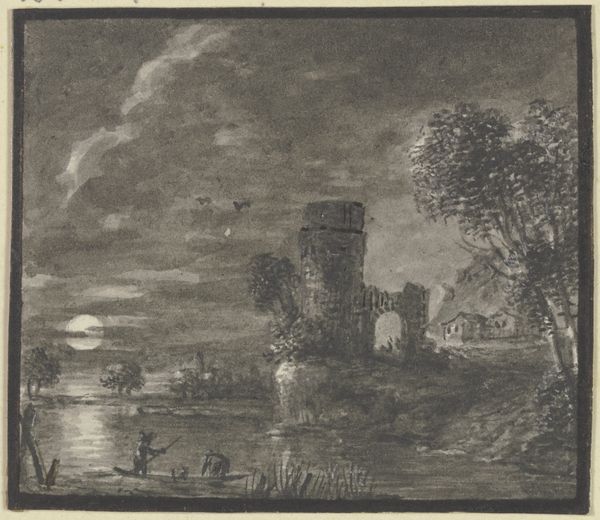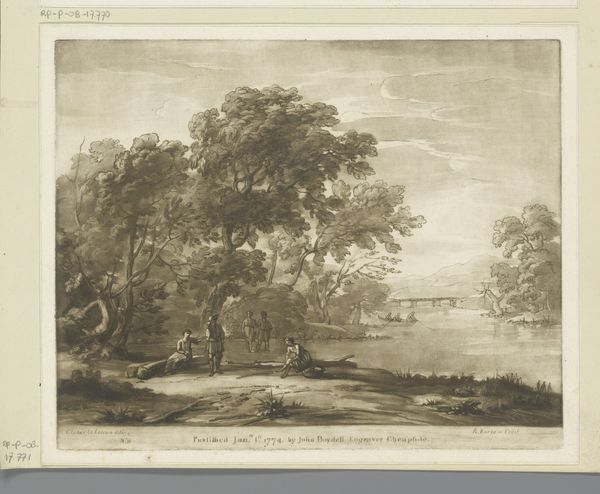
drawing, print, etching, engraving
#
drawing
#
baroque
# print
#
etching
#
landscape
#
northern-renaissance
#
engraving
Dimensions: height 134 mm, width 198 mm
Copyright: Rijks Museum: Open Domain
Curator: Nicolas Perelle created "Landschap bij nacht," which translates to "Landscape at Night," sometime between 1613 and 1666. The artwork is presently held at the Rijksmuseum and made with printmaking techniques like etching and engraving. Editor: There's something both calming and slightly unsettling about this piece. The moon casts this stark light across the water, making the trees loom large and a bit menacing. Curator: It's interesting how Perelle uses the techniques of engraving and etching to create that contrast. Think about the labor involved: each line meticulously placed to manipulate light and shadow, giving the piece depth. What do you make of the composition? Editor: The composition certainly has an almost stage-like quality, doesn't it? There's a clear foreground with the heavy foliage, then the reflecting water that draws your eye back to those figures silhouetted against the moon. One has to consider what kind of landscapes were socially acceptable as worthy subjects during this period. What statement, if any, do you feel the work attempts to convey? Curator: I agree that Perelle is working within certain constraints for his audience, shaping the image as a saleable commodity that had social appeal to Northern Renaissance and Baroque aesthetics. Perhaps the contrast between the illuminated open water with distant figures, and the shadowed immediate forest could be taken as a depiction of man’s dominance over nature? Editor: That is certainly one interpreation, however the scene is devoid of context, and those silhouetted figures may very well be a family simply taking in the still of the evening! One can observe, without speculation that this sort of picturesque scene spoke to its period; an image probably crafted, copied, sold and collected in numbers to demonstrate one’s sophisticated taste for refined art. Curator: That is a salient point, one easily taken for granted as modern viewers. These kinds of scenes, while familiar to us, would perhaps convey wealth and societal standing as part of an artistic cultural phenomenon during the period in which it was made and shared. Editor: It definitely offers an intriguing window into both the technical mastery of printmaking and the cultural values that shaped its reception. Curator: It reminds me that what appears on the surface to be a simple landscape carries so much within it – social, historical, and material narratives all intertwined.
Comments
No comments
Be the first to comment and join the conversation on the ultimate creative platform.

